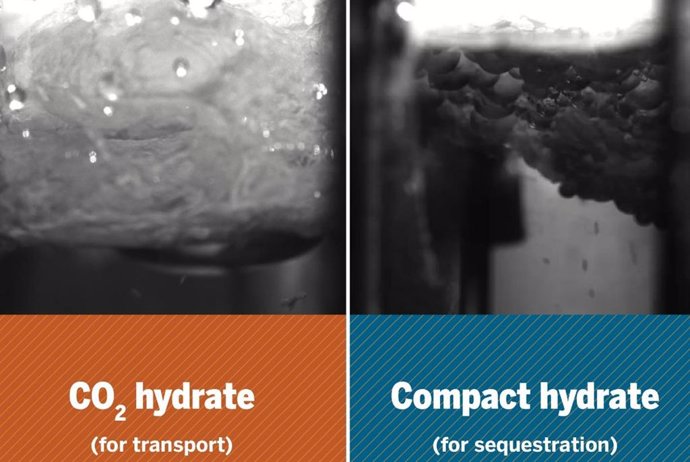New carbon storage technology is the fastest of its kind – UNIVERSITY OF TEXAS AT AUSTIN
9 Jul. () –
A new method for storing carbon captured from the atmosphere works very well Faster than current methods without harmful chemical accelerators what do you require.
In new research published in ACS Sustainable Chemistry & Engineeringa team at the University of Texas at Austin developed a technique for the ultra-rapid formation of carbon dioxide hydrates. These unique ice-like materials can bury carbon dioxide in the ocean, preventing it from being released into the atmosphere.
“We face a huge challenge: finding a way to safely remove gigatons of carbon from our atmosphere, and hydrates offer a universal solution for carbon storage. For them to be a significant part of the carbon storage pie, we need the technology to grow them quickly and at scale,” he said. it’s a statement Vaibhav Bahadur, a professor in the Walker Department of Mechanical Engineering who led the research, said: “We’ve shown that we can grow hydrates rapidly without using any chemicals that would counteract the environmental benefits of carbon capture.”
Carbon dioxide is the most common greenhouse gas and a major driver of climate change. Carbon capture and sequestration removes carbon from the atmosphere and stores it permanently. And it is considered a fundamental aspect to decarbonize our planet.
Today, the most common carbon storage method is to inject carbon dioxide into underground reservoirs. This technique has the dual benefit of trapping carbon and also increasing oil production.
However, this technique faces significant problems, such as carbon dioxide leakage and migration, groundwater contamination, and seismic risks associated with injection. Many parts of the world also lack suitable geological features for injection into reservoirs..
Hydrates represent a “Plan B” for large-scale carbon storage, Bahadur said, but they could become “Plan A” if some major problems can be overcome. So far, the process of forming these carbon-trapping hydrates has been slow and energy-intensive, which has hampered them as a medium for large-scale carbon storage.
In this new study, researchers achieved a six-fold increase in the rate of hydrate formation compared to previous methods. The speed combined with the chemical-free process facilitates the use of these carbohydrates for large-scale carbon storage.
Magnesium represents the “secret sauce” in this research, acting as a catalyst that eliminates the need for chemical promoters. This is facilitated by high-speed bubbling of CO2 in a specific reactor configuration.This technology works well with seawater, making it easier to implement because it does not rely on complex desalination processes to create fresh water.
“Hydrates are attractive carbon storage options as the seabed offers stable thermodynamic conditions, which protects them from decay,” Bahadur said. “We are essentially making carbon storage available to every country on the planet that has a coastline.”; This makes storage more accessible and feasible on a global scale and brings us closer to achieving a sustainable future.”
The implications of this breakthrough extend beyond carbon sequestration. Ultra-fast hydrate formation has potential applications in desalination, gas separation and gas storage, offering a versatile solution for various industries.















![[Img #74807]](https://thelatestnews.world/wp-content/uploads/2025/01/Dinosaurs-in-the-northern-hemisphere-millions-of-years-earlier-than-300x200.jpg)
Add Comment